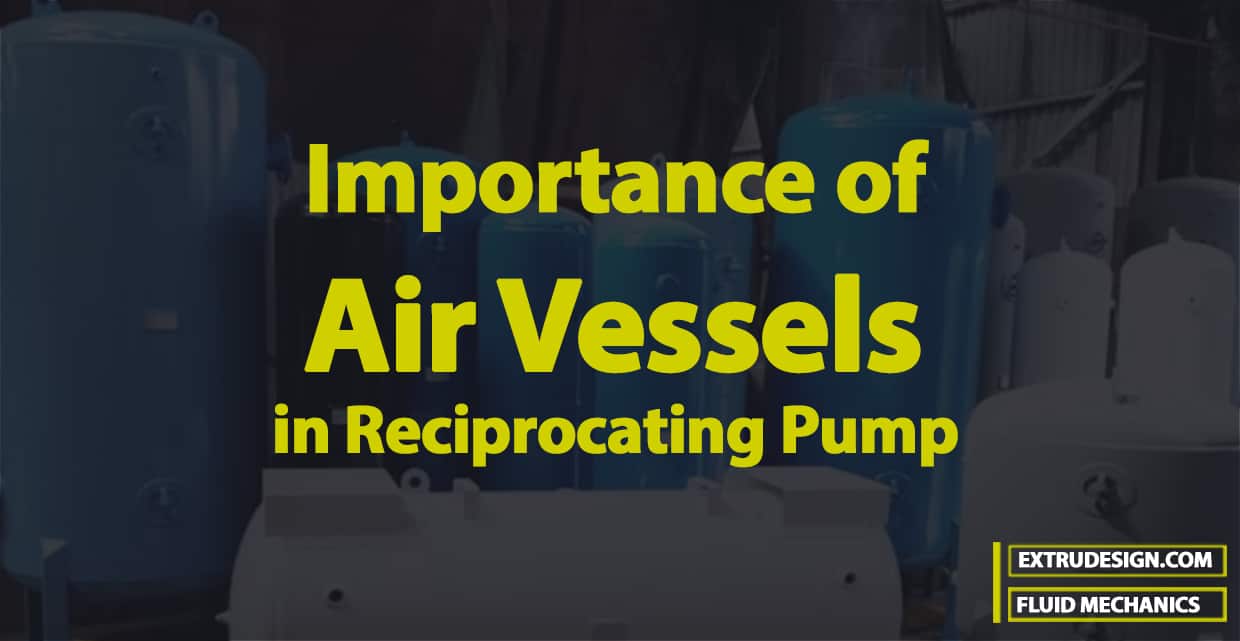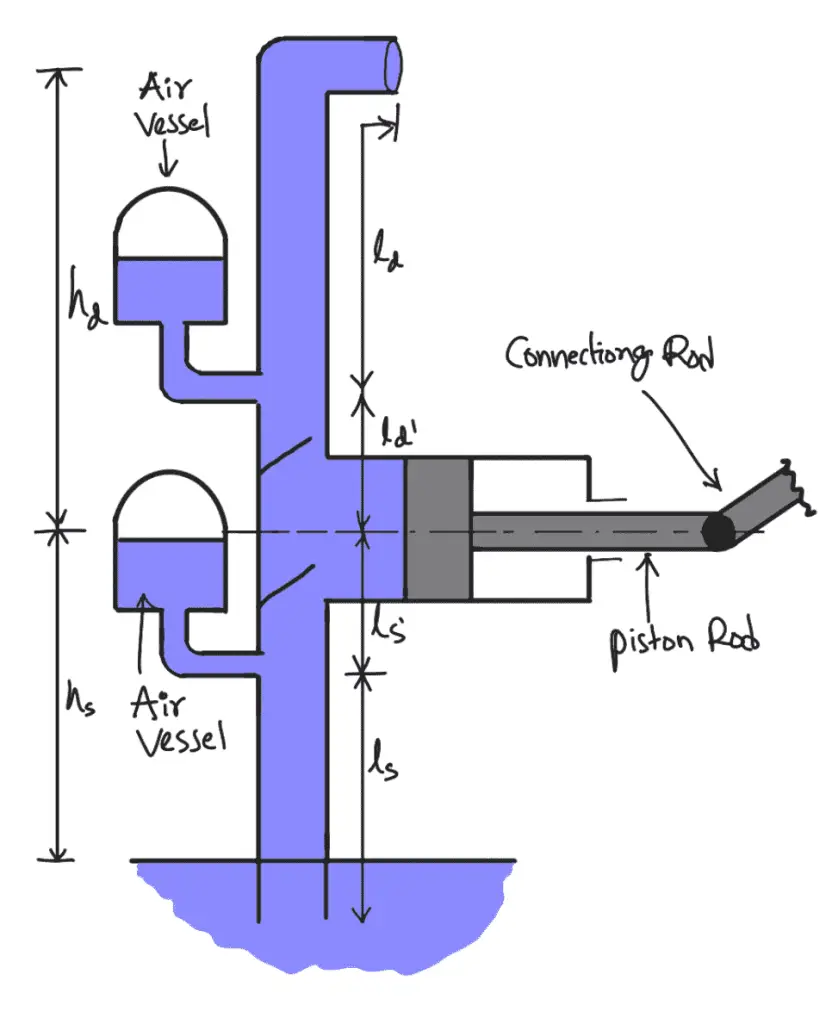Air Vessels are mainly used to maintain uniform discharge in the operation of reciprocating pumps. An air vessel is a cast iron closed chamber that stores compressed air from the reciprocating pumps. an Air Vessel is an intermediate reservoir to store energy. Inside the Air vessels, the top portion is filled with air and the bottom of the chamber will be filled with liquid (or water). Let us understand the construction and the importance of Air Vessels fitted to the Reciprocating pumps.

The hydraulic machines, which convert the hydraulic energy into mechanical energy, are called turbines while the hydraulic machines which convert mechanical energy into hydraulic energy are called pumps. Hydraulic energy is in the form of pressure energy. If the mechanical energy is converted into pressure energy by means of centrifugal force acting on the fluid, the hydraulic machine is called a centrifugal pump. If the mechanical energy is converted into hydraulic energy (or pressure energy) by sucking the liquid into a cylinder in which a piston is reciprocating (moving backwards and forwards), which exerts the thrust on the liquid and increases its hydraulic energy (pressure energy), the pump is known as the reciprocating pump.
Air Vessels
An air vessel is a closed chamber containing compressed air in the top portion and liquid (or water) at the bottom of the chamber. At the base of the chamber, there is an opening through which the liquid (or water) may flow into the vessel or out of the vessel. When the liquid enters the air vessel, the air gets compressed further and when the liquid flows out of the vessel, the air will expand in the chamber.
An air vessel is fitted to the suction pipe and to the delivery pipe at a point close to the cylinder of a single-acting reciprocating pump:
- To obtain a continuous supply of liquid at a uniform rate.
- To save a considerable amount of work in overcoming the frictional resistance in the suction and delivery pipes.
- To run the pump at a high speed without separation.
The following figure shows the single-acting reciprocating pump to which air vessels are fitted to the suction and delivery pipes. The air vessels act like an intermediate reservoir.

Working of Air Vessel
- During the first half of the suction stroke, the piston moves with acceleration, which means the velocity of water in the suction pipe is more than the mean velocity.
- Hence the discharge of water entering the cylinder will be more than the mean discharge.
- This excess quantity of water will be supplied from the air vessel to the cylinder in such a way that the velocity in the suction pipe below the air vessel is equal to the mean velocity of flow.
- During the second half of the suction stroke, the piston moves with retardation and hence the velocity of flow in the suction pipe is less than the mean velocity of flow.
- Thus, the discharge entering the cylinder will be less than the mean discharge.
- The velocity of water in the suction pipe due to the air vessel is equal to the mean velocity of flow and the discharge required in the cylinder is less than the mean discharge.
- Thus, the excess water flowing in the suction pipe will be stored in an air vessel, which will be supplied during the first half of the next suction stroke.
- When the air vessel is fitted to the delivery pipe, during the first half of the delivery stroke, the piston moves with acceleration and forces the water into the delivery pipe with a velocity more than the mean velocity.
- The quantity of water in excess of the mean discharge will flow into the air vessel. This will compress the air inside the vessel.
- During the second half of the delivery stroke, the piston moves with retardation and the velocity of water in the delivery pipe will be less than the mean velocity.
- The water already stored in the air vessel will start flowing into the delivery pipe and the velocity of flow in the delivery pipe beyond the point to which the air vessel is fitted will become equal to the mean velocity. Hence, the rate of flow of water in the delivery pipe will be uniform.
This is all about the Air Vessels Let us know what you think about this article in the comment section below.

Leave a Reply